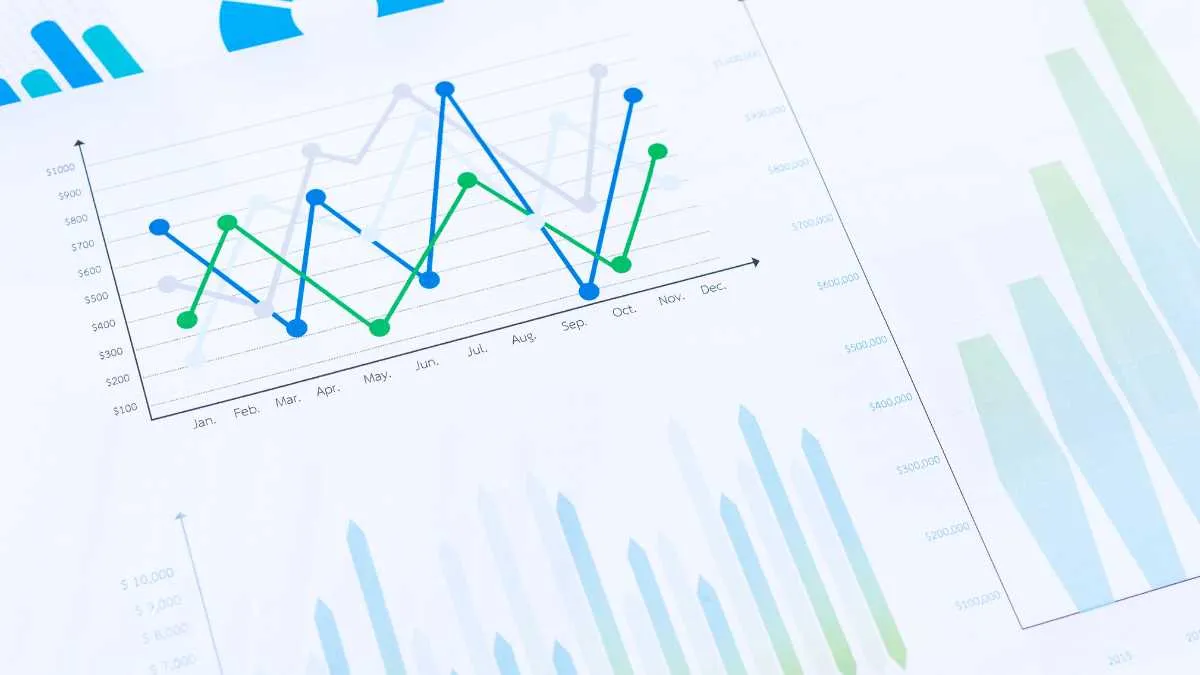Monday Feb 19 2024 03:43

13 min
4.2 Why is Technical Analysis important in stock market analysis?
4.3 What are chart patterns and how can they be used in Technical Analysis?
4.4 What are technical indicators and how do they help in Technical Analysis?
4.5 What is trend analysis and why is it important in Technical Analysis?
4.6 What are support and resistance levels and how are they used in Technical Analysis?
4.7 What is price action analysis and how does it contribute to Technical Analysis?
4.9 What are candlestick patterns and how can they be used in Technical Analysis?
4.10 What are momentum indicators and how do they contribute to Technical Analysis?
4.11 How can trading signals be generated using Technical Analysis?

Technical Analysis is an essential tool for navigating the stock market with confidence. Whether you are a seasoned trader or just starting, understanding Technical Analysis can greatly enhance your ability to make informed trading decisions.
Technical Analysis involves the study of historical price data, charts, and patterns to identify trends and predict future price movements. By analysing market data, traders can gain valuable insights into the psychology of market participants and make more accurate predictions about future price action.
In this article, we will provide you with an overview of the key aspects of Technical Analysis and how it can help you in your trading journey. We will explore chart patterns, technical indicators, trend analysis, and support and resistance levels.
By the end of this article, you will have a solid understanding of the essentials of Technical Analysis and how to apply them to your trading strategy.

These powerful tools can provide valuable insights into market trends and help you identify potential buy or sell signals. By understanding how to interpret chart patterns and utilise technical indicators, you'll be better equipped to make informed trading decisions.
Chart patterns serve as visual representations of market behaviour and can provide valuable clues about future price movements. By recognizing and analysing these patterns, traders can gain insights into market sentiment and potential price reversals.
There are numerous types of chart patterns, each with its own unique characteristics and implications. Some common examples include:
By understanding and identifying these chart patterns, traders can anticipate potential price movements and adjust their trading strategies accordingly.
Technical indicators are mathematical calculations based on historical price and volume data. They help traders analyse price movements and detect market shifts.
There are a wide variety of technical indicators available, each providing unique insights into market conditions. Some commonly used technical indicators include:
By incorporating technical indicators into your analysis, you can gain deeper insights into market trends, confirm chart patterns, and enhance the accuracy of your trading decisions.

In this section, we will focus on the critical aspects of trend analysis and understanding support and resistance levels in technical analysis.
Trend analysis is a fundamental tool that traders use to identify the direction of a market and predict future price movements.
By analysing historical price data, traders can identify patterns and trends that may repeat in the future. Trend analysis helps traders make informed decisions about whether to buy, sell, or hold a particular asset.
"The trend is your friend" is a well-known saying among traders. Recognizing and following the trend can be crucial for successful trading strategies.
By examining price charts, traders can identify different types of trends, such as uptrends, downtrends, and sideways trends. Uptrends occur when prices consistently move higher, while downtrends occur when prices consistently move lower.
Sideway trends, also known as consolidation or range-bound periods, occur when prices remain within a specific price range without a clear upward or downward bias.
Support and resistance levels are key concepts in technical analysis that help traders determine potential entry and exit points in trades.
Support levels are price levels at which demand for an asset is strong enough to prevent it from falling further. When an asset reaches a support level, it is expected to rebound or experience a temporary halt in the downward movement. Traders often view support levels as attractive buying opportunities.
Resistance levels, on the other hand, are price levels at which the supply of an asset is strong enough to prevent it from rising further. When an asset reaches a resistance level, it is likely to face selling pressure, which can lead to a reversal or temporary halt in the upward movement. Traders often view resistance levels as ideal selling opportunities.
"The support becomes resistance, and the resistance becomes support." This concept refers to the idea that once a support level is broken, it may turn into a resistance level, and vice versa. Traders often observe these levels to gauge potential price reversals.
Analysing support and resistance levels can provide valuable insights into market dynamics, as they indicate the levels at which traders are likely to buy or sell an asset, creating concentration points for demand and supply.
Understanding trend analysis and support and resistance levels is essential for traders looking to make informed investment decisions. By combining these techniques with other technical indicators, traders can develop robust trading strategies that increase their chances of success in the market.
Mastering technical analysis is crucial for successful trading in the stock market. Throughout this article, we have explored the key components of technical analysis, including price action analysis, moving averages, candlestick patterns, momentum indicators, and trading signals.
By incorporating these essential elements of technical analysis into your trading strategy, you can enhance your ability to identify profitable opportunities and effectively navigate the complex world of the stock market.
Become a member of markets.com and access a cutting-edge trading platform.
Technical Analysis is the study of historical price and volume data to identify patterns, trends, and market behaviour. It is used by traders and investors to make informed decisions based on past market performance and predict future price movements.
Technical Analysis helps traders and investors understand the psychology of the market and uncover potential trading opportunities. By analysing chart patterns, technical indicators, support and resistance levels, and other factors, traders can gain insights into market trends and make well-considered trading decisions.
Chart patterns are specific formations that appear on price charts and provide valuable information about market trends and potential price reversals. Traders use these patterns, such as triangles, head and shoulders, or double tops/bottoms, to identify possible trading opportunities and set entry and exit points.
Technical indicators are mathematical calculations applied to price and volume data to identify potential market trends and momentum. Examples of technical indicators include moving averages, oscillators, and trend-following indicators. Traders use these indicators to confirm chart patterns, generate trading signals, and support their decision-making process.
Trend analysis involves identifying the direction and strength of a market's movement. It helps traders understand whether the market is in an uptrend, downtrend, or range, allowing them to align their trading strategies accordingly. Trend analysis can be done using various tools and techniques, such as trend lines, moving averages, and momentum indicators.
Support levels are price levels where buying interest tends to be strong, preventing the price from falling further. Resistance levels, on the other hand, are price levels where selling pressure tends to be strong, preventing the price from rising further. Traders use support and resistance levels to identify potential entry and exit points and gauge the strength of market trends.
Price action analysis involves studying the movements and patterns of prices on a chart without relying on additional indicators. It helps traders understand the interactions between buyers and sellers and identify recurring patterns that indicate potential future price movements. Price action analysis is often used in conjunction with other tools and techniques to enhance trading decisions.
Moving averages are calculated by averaging the prices over a specific period, and they help smooth out price data to identify trends more clearly. Traders use moving averages to identify potential market entry and exit points, gauge the strength of a trend, and generate trading signals when the price crosses above or below a moving average.
Candlestick patterns are graphical representations of price movements on a chart. Each candlestick shows the opening, closing, high, and low prices for a specific time period. Traders use candlestick patterns to identify potential market reversals, confirm chart patterns, and generate trading signals based on the shape and position of the candles.
Momentum indicators help traders identify the strength and speed of price movements. They compare the current price to previous prices or calculate changes in price or volume. Popular momentum indicators include the Relative Strength Index (RSI), Moving Average Convergence Divergence (MACD), and Stochastic Oscillator. Traders use these indicators to gauge whether a market is overbought or oversold and identify potential trend reversals.
Trading signals are generated when specific conditions or combinations of indicators are met. For example, a moving average crossover occurs when a short-term moving average crosses above or below a long-term moving average, potentially indicating a change in trend. Traders use these signals to determine when to enter or exit trades and manage risk.
“When considering “CFDs” for trading and price predictions, remember that trading CFDs involves a significant risk and could result in capital loss. Past performance is not indicative of any future results. This information is provided for informative purposes only and should not be considered investment advice.”